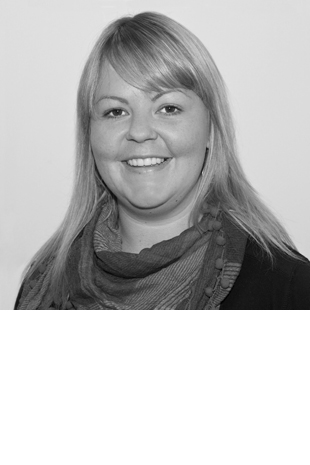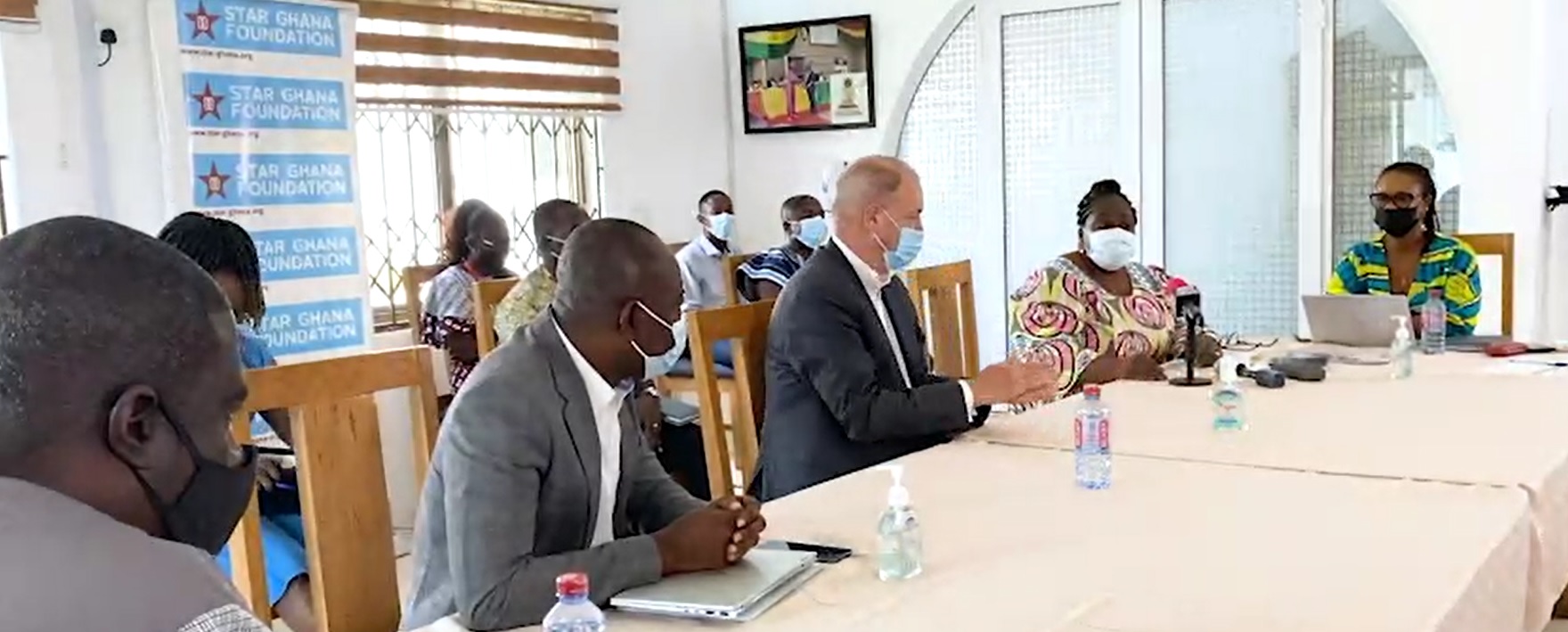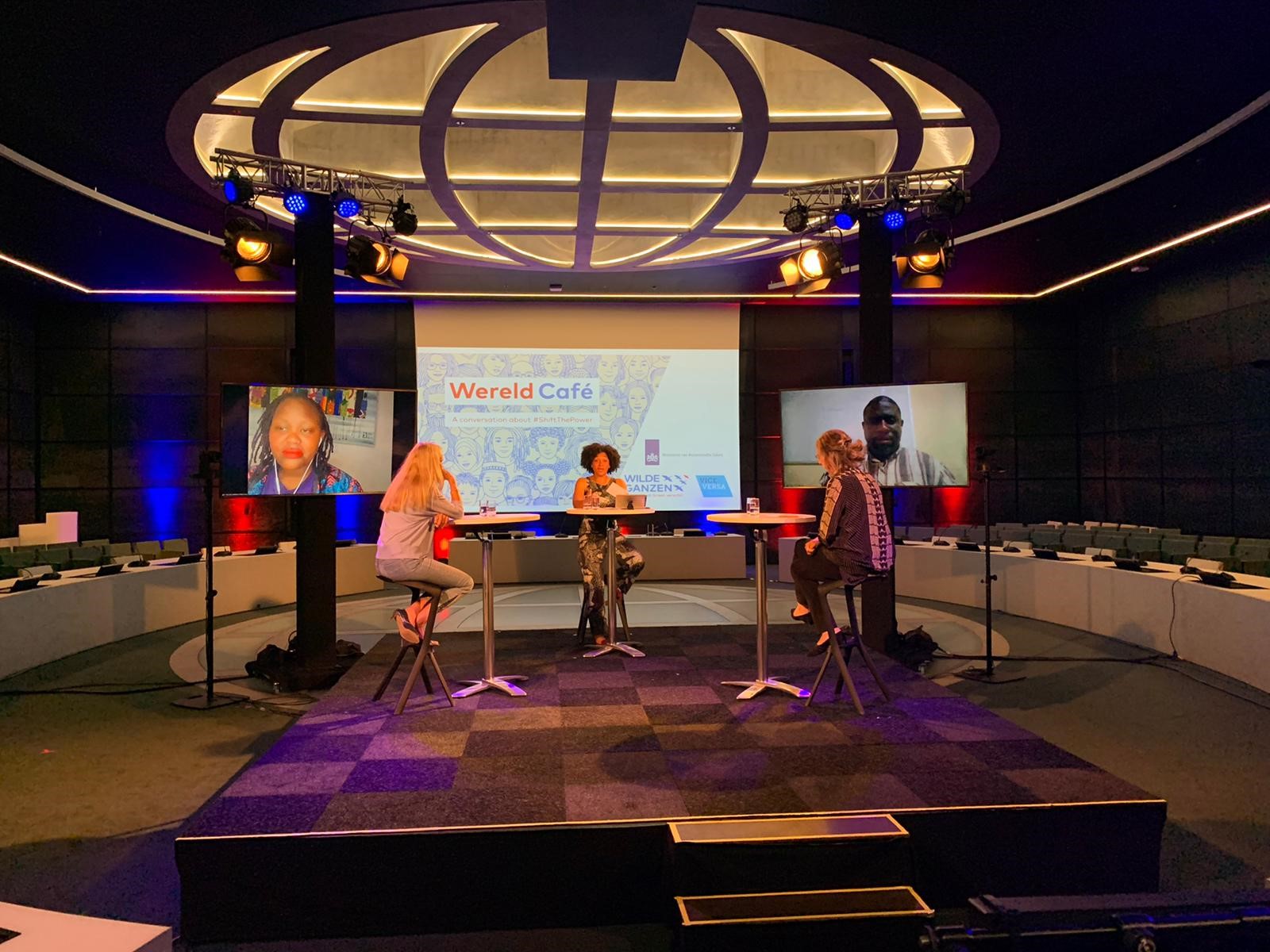“It’s about moving away from a cold, prescriptive way of looking at the world” – Meet the Giving for Change alliance: Global Fund for Community Foundations
21 Feb 2022
In this series of interviews, we will be introducing you to the lead partners involved in the Giving for Change programme! The five-year, €24 million programme will be implemented in Brazil, Burkina Faso, Ethiopia, Ghana, Kenya, Mozambique, Palestine and Uganda, and is led by a consortium of four organizations: the Africa Philanthropy Network, Kenya Community Development Foundation, Global Fund for Community Foundations (GFCF) and Wilde Ganzen. The aim of Giving for Change – part of the Dutch government’s ‘Power of Voices’ programme – is to foster local giving as an expression of voice, civic participation, solidarity and dissent. The programme will build evidence around new thinking, approaches and leadership that support community philanthropy development.
In this Q&A Ese Emerhi, Global Network Weaver at the GFCF, reflects on the emergence of community philanthropy as a new paradigm for development, and how the Giving for Change programme can take the field to the next level. She considers the role of donors and INGOs in a redefined architecture for aid – and reflects on some of the mind-set shifts (including her own!) that will be required to make this a reality.
What does community philanthropy currently look like around the world?

Ese Emerhi, GFCF Global Network Weaver
Ese: Community philanthropy around the world takes on many shapes and forms but what unites the GFCF’s global network of partners – whether they call themselves community foundations, women’s funds, human rights funds, peace funds or something else altogether – is that they represent a new and more democratic movement in philanthropy. By emphasizing the role of community resources as a way to foster buy-in, ownership and collective action, these are organizations all seeking to tip the balance of power in favour of local people.
What we often see are small but mighty organizations playing important and unique roles in their communities: by recognizing and pooling local assets; building the capacities of local partners through grants and other forms of support; and, building relationships and trust across different parts of their community (often, in contexts where trust in institutions and other actors is sorely lacking). The emergence of community philanthropy has challenged the paradigm of development aid as something that’s delivered from the top-down. Instead, people who would traditionally be classed as “beneficiaries”, or rendered powerless, are now taking control of their communities and reshaping the aid architecture as equal partners.
What does #ShiftThePower mean to you/your organization?
Ese: The beauty of the #ShiftThePower movement is the diversity of voices it brings together. People can easily relate to the core messages around #ShiftThePower (agency, trust, accountability, change in mind-sets, dignity etc.), and they become emotionally invested in it, not just programmatically. We’ve seen many organizations and local leaders use the hash-tag for their own local initiatives: as a way to rally local support and enthusiasm, but also as a way to express dissatisfaction with top-down structures that have failed to deliver.
#ShiftThePower often takes on different meanings/emphasis for different people but, despite these differences, there is still a strong “us” there. What ties together the global #ShiftThePower movement is the awareness that alternatives to the current system aren’t something that need to be developed or dreamt up: these alternative ways of deciding and doing are already evident in communities around the world! They just need to be recognized, appreciated and better supported.
Since starting as the GFCF’s Global Network Weaver in April 2021, I’ve reflected quite a bit on what #ShiftThePower means to, and for, me. From my perspective, it’s about unshackling myself from the traditional development practitioner mode of providing (external) solutions to problems. It’s about moving away from a cold, prescriptive way of looking at the world and instead taking the time and patience to do some deep listening, learning and un-learning. Mind-set shift — getting people to not only be open to alternative perspectives but to also believe in them firmly — is something I am practicing myself. It’s slow and discomforting because a lot has to do with how we view the world and ourselves in it. I am fortunate that my work, including the Giving for Change programme, gives me plenty of examples of people living lives so drastically different from the one I know and understand.
How will the Giving for Change programme help to advance the community philanthropy field or #ShiftThePower globally?
Ese: Broadly, Giving for Change challenges the notion that development is something that is “done to” communities by external actors. Specifically, the programme will be taking a three-pronged approach to advancing the community philanthropy field:
- At the community level: Using action research, peer learning, and small grants to promote community philanthropy as a strategy that builds local assets, agency, and trust.
- At the national level: Influencing national actors – including government, emerging philanthropists, and individual donors – to support the development of community philanthropy. Advocating for a more enabling environment to promote the power of local philanthropic giving as a driver of social change.
- At the global level: Promoting the development of community philanthropy as a central pillar of broader efforts to #ShiftThePower amongst international development actors. Growing a global movement of actors committed to supporting community philanthropy as a strategy for people-led development.
How can the Giving for Change programme help encourage donors / INGOs to really shift power and resources closer to the ground?
Ese: Changing mind-sets and attitudes is a long-term endeavour, but it begins with an openness to question and address the practices that reinforce power dynamics. It is our hope that the Giving for Change programme – a bold investment from the Dutch Ministry of Foreign Affairs to support the global community philanthropy field – will be a powerful example and source of learning for other donors who believe that another way is possible. And if a large bilateral donor such as the Dutch Ministry of Foreign Affairs can engage in this kind of bottom-up (admittedly, not always linear or straightforward) work, while still meeting their legal and statutory obligations…then why can’t other donors?
But it’s important to add that donors and INGOs must be willing to embrace the reality that real change is a long-term process. If donors are to be part of this re-imagining of how development is done, they must be willing to fund systems change and invest in organizations and the processes that matter. Donors and INGOs must be prepared to reduce their own footprint and instead, for example, begin to use their fundraising machinery to help grassroots organizations create structures to fundraise for themselves and sustain their own work. This means the end of transactional partnerships and project cycle funding that have left many organizations unable to survive sustainably year after year. Instead, we need to start seeing more serious, long-term and flexible investments in organizations’ core institutional capacities and staff. In addition, donors and INGOs must shift away from viewing communities as problems to be solved and instead as equal partners; it takes a co-creating model with partners from the Global South to begin to shift power.
How has aid undermined local giving practices and what can the Giving for Change programme do about that?
Ese: In aid and philanthropy the norm is that Global North organizations set the rules and Global South organizations adapt and abide by these rules, in order to access funding for their survival. It is a self-reinforcing problem. For local communities in the Global South, abiding by these external rules of donors has meant implementing well-meaning initiatives that do not have any local ownership, and do not inspire communities to show up as their true selves with their true strengths. How can an organization possibly mobilize local resources and assets in support of a project dreamt up at a desk in Geneva, Washington or London? This isn’t a system “normal” people want to be a part of, let alone support with their time or hard-earned money.
But to assume that community-led development is a new phenomenon is to take away the agency of local communities and leaders who have been doing the work of developing their communities away from the glare of international philanthropy. Enter Giving for Change, which is based on the premise that external funding must recognize, respect and build on local resources – rather than overlook, undermine or displace.
Meet the other Giving for Change partners:
Association Burkinabè de Fundraising (Burkina Faso)
Brazil Philanthropy Network for Social Justice
Coordenadoria Ecumênica de Serviço – CESE (Brazil)
Development Expertise Center (Ethiopia)
Kenya Community Development Foundation
MICAIA Foundation (Mozambique)




